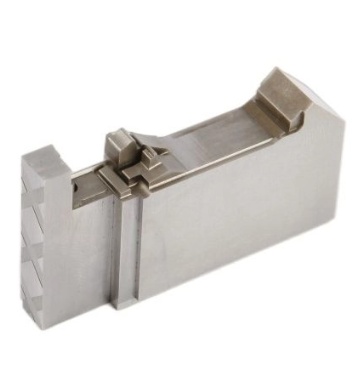Views: 0 Author: Site Editor Publish Time: 2025-10-02 Origin: Site








High precision injection molding shapes complex parts. It requires extreme accuracy for tight tolerances. Precision mold spare parts ensure consistent quality. In this article, you will learn its process, benefits, and key applications. Discover how it impacts industries like medical and aerospace.
High precision injection molding is a process designed to manufacture plastic parts that replace high-precision metal components in critical applications. It requires a carefully engineered mold, controlled materials, and machines capable of maintaining exact pressures and temperatures. The process allows for low shrinkage, smooth surfaces, and consistent dimensions across large production batches.
Key characteristics include:
Tolerances as tight as ±0.001–0.002 inches.
Ability to produce complex shapes with minimal defects.
Repeatable production using high-quality precision mold spare parts.
When selecting a manufacturer, ensure they understand precision injection molding definition and can maintain repeatable accuracy.
Medical Devices: Surgical instruments, implantable components.
Aerospace: Aircraft components, satellites.
Automotive: Sensors, electronic modules, fuel injectors.
Electronics & Optics: Connectors, lenses, optical assemblies.
Each industry relies on precise dimensions and consistent quality, making precision molds and spare parts critical.

The mold is the heart of the process. Key aspects include:
Material: Steel alloys or cast iron.
Design: Accurate cavity sizes, smooth parting surfaces.
Tolerance: ±0.01–0.02 mm or tighter for critical parts.
Regular maintenance of precision molds prevents defects and extends lifespan.
Machines must provide:
High clamping force for tight tolerances.
Controlled injection pressure and speed.
Accurate temperature regulation.
They work alongside precision mold spare parts to ensure uniformity across production runs.
Materials must maintain dimensional stability:
Low shrinkage plastics such as ABS, PEEK, or polycarbonate.
Optional fillers like glass fibers to reduce thermal expansion.
Testing material shrinkage beforehand reduces trial-and-error and waste.
Automation increases repeatability and reduces labor costs:
Robotic part handling and ejection.
Computer-controlled injection cycles.
It ensures that every piece aligns with design specifications.
Mold design and engineering.
Material selection and preparation.
Machine calibration and setup.
Injection process with continuous monitoring.
Part inspection and quality verification.
Document each step to maintain consistent results and traceability.
Coordinate Measuring Machines (CMM) for dimensional checks.
Optical inspection for surface defects.
Regular mold and machine calibration.
| Problem | Cause | Solution |
|---|---|---|
| Short shot | Low pressure or material flow | Increase pressure, adjust gates |
| Flash | Mold wear or overfilling | Repair mold, reduce injection pressure |
| Sink marks | Uneven cooling or shrinkage | Adjust cooling, material selection |
| Warping | Residual stress | Modify packing pressure, mold design |
| Weld lines | Material flow meeting points | Optimize gate placement, temperature |
Skilled operators are critical for quickly resolving process deviations.
Produces intricate parts for demanding applications.
Ensures geometric accuracy and dimensional consistency.
Less material waste due to precise molds.
Fewer reworks and lower labor costs.
Using high-quality precision mold spare parts can further reduce operational costs.
Automated systems shorten production cycles.
Suitable for large batch manufacturing without sacrificing quality.
Smooth surfaces and consistent dimensions.
Parts meet stringent industry standards.
| Feature | Conventional Injection Molding | High Precision Injection Molding |
|---|---|---|
| Tolerance | ±0.005″ | ±0.001–0.002″ |
| Material | Standard plastics | Low shrinkage plastics |
| Mold Quality | Standard steel molds | High-grade steel alloys |
| Production Speed | Faster, less controlled | Slower, highly controlled |
| Ideal Applications | General consumer products | Medical, aerospace, electronics |
Precision molding is justified for high-value, safety-critical, or high-tolerance parts.
Look for experience and proven projects.
Evaluate their technical capabilities.
Ensure machines support tight tolerances.
Check pressure, clamping, and speed controls.
Use precision mold spare parts for longevity.
Schedule preventive maintenance and inspections.
Manufacturer guidance ensures process optimization.
Supports troubleshooting and production scalability.
Partner with suppliers who offer both expertise and spare parts availability.
High precision injection molding ensures accurate, detailed parts improve consistency and efficiency. Usane provides high-quality components that reduce defects and costs. Partnering with Usane enhances production, quality, and reliability for critical industries.
A: It is a process producing plastic parts with tight tolerances. Precision mold spare parts ensure consistent quality.
A: Medical, aerospace, electronics, and optics rely on precise components.
A: They maintain mold accuracy, improve repeatability, and reduce defects in production.